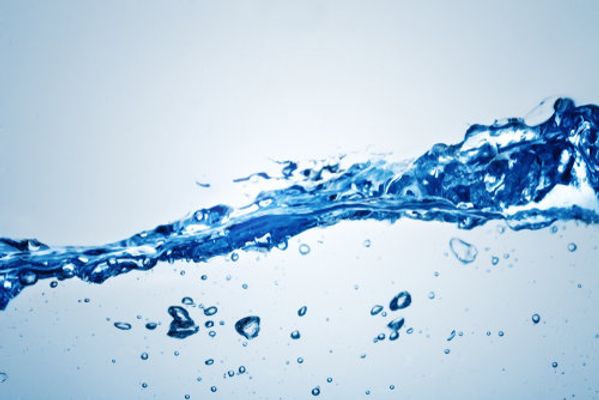4.8.1
Cell Membrane Structure
Structure and Function of Cell Membranes
Structure and Function of Cell Membranes
The fluid mosaic model describes the structure of the plasma membrane as a mosaic of phospholipids, cholesterol, proteins, and carbohydrates. This gives the membrane a fluid character.


Function of the plasma membrane
Function of the plasma membrane
- The plasma membrane defines the borders of cells and most organelles.
- The plasma membrane is selectively permeable. This means that the membrane allows some materials to freely enter or leave the cell/organelle, while other materials cannot move freely.


Structure of phospholipids
Structure of phospholipids
- A phospholipid is a molecule consisting of glycerol, two fatty acids, and a phosphate-linked head group.
- The molecules arrange themselves into a bilayer which ranges from 5 to 10 nm in thickness.
- The hydrophilic phospholipid head faces outwards and the hydrophobic fatty acids faces inwards.


Structure of cholesterol
Structure of cholesterol
- Cholesterol is a lipid that sits with phospholipids in the core of the membrane.
- Cholesterol is not found in bacterial cell membranes.
- Cholesterol molecules make the membrane more rigid.
- This explains why cholesterol helps to maintain the shape of animal cells.
The permeability of cell membranes
The permeability of cell membranes
The permeability of cell membranes (how easy it is for substances to pass through them) can be influenced by several factors including:


Temperature
Temperature
- Higher temperatures increase the fluidity of the membrane, increasing its permeability.
- Using a water bath can help keep temperature constant.


Solvent concentration
Solvent concentration
- The more easily the phospholipid bilayer is dissolved, the more permeable the membrane is.
- Solvent concentration can be controlled by using the same solvent at the same concentration for each trial.


pH
pH
- pH affects the protein structure in the cell membrane.
- Buffer solutions can be used to control the pH.
Investigating Cell Membrane Permeability
Investigating Cell Membrane Permeability
Beetroot is often used as a model because the release of the coloured pigment is easy to quantify using colorimetry. The steps involved are:


1) Collect beetroot samples
1) Collect beetroot samples
- Use a cork borer to collect samples of uniform diameter.
- Cut discs of a uniform depth using a sharp scalpel on a white tile and rinse in cold water. This removes excess pigment that has leaked through physically broken cell membranes.


2) Add ethanol
2) Add ethanol
- Prepare at least five concentrations of ethanol (e.g. 0%, 10%, 20%, 30%, 40%) in beakers.
- Place the discs into the corresponding solution for 10 minutes.
- Make sure the samples are completely covered by the ethanol solutions and mixed frequently throughout the 10 minutes.


3) Remove the discs
3) Remove the discs
- Remove the discs from the solutions to prevent further changes and allow a fair comparison between the experiments.


4) Calibrate the colorimeter
4) Calibrate the colorimeter
- Calibrate a colorimeter by using a cuvette of distilled water at an absorbance of 520nm.
- The cuvettes must be dry and the clear sides must not be touched to prevent potential errors in the readings.


5) Measure absorbance
5) Measure absorbance
- Measure the absorbance of each solution.
- Plot the results in a graph with concentration on the x-axis and absorbance on the y-axis.
- The darker the solution, the more pigment has been released. This is reflected in a higher reading for absorbance.
1Principles of Science I
1.1Structure & Bonding
1.1.1Atomic Model
1.1.2Electron Shells, Sub-Shells & Orbitals
1.1.3Ionic Bonding
1.1.4Representing Ionic Bonds
1.1.5Covalent Bonding
1.1.6Representing Covalent Bonds
1.1.7Metallic Bonding
1.1.8Intermolecular Forces
1.1.9Intermolecular Forces 2
1.1.10End of Topic Test - Bonding
1.1.11Relative Masses
1.1.12The Mole
1.1.13Molar Calculations
1.1.14Molar Calculations 2
1.1.15Empirical & Molecular Formulae
1.1.16Balanced Equations
1.1.17Percentage Yield
1.1.18End of Topic Test - Amount of Substance
1.2Properties of Substances
1.2.1The Periodic Table
1.2.2Ionisation Energy
1.2.3Factors Affecting Ionisation Energies
1.2.4Trends of Ionisation
1.2.5Trends in the Periodic Table
1.2.6Polarity
1.2.7Metals & Non-Metals
1.2.8Alkali Metals
1.2.9Alkaline Earth Metals
1.2.10Reactivity of Alkaline Earth Metals
1.2.11Redox
1.2.12Transition Metals
1.2.13Redox Reactions of Transition Metals
1.3Cell Structure & Function
1.4Cell Specialisation
1.5Tissue Structure & Function
1.5.1Human Gas Exchange
1.5.2Blood Vessels
1.5.3Atherosclerosis
1.5.4Skeletal Muscle
1.5.5Slow & Fast Twitch Fibres
1.5.6Neurones
1.5.7Speed of Transmission
1.5.8Action Potentials
1.5.9End of Topic Test - Neurones & Action Potentials
1.5.10Synapses
1.5.11Types of Synapse
1.5.12Medical Application
1.5.13End of Topic Test - Synapses
1.5.14Chemical Brain Imbalances
1.5.15Effect of Drugs on the Brain
1.6Working with Waves
1.7Waves in Communication
2Practical Scientific Procedures and Techniques
3Science Investigation Skills
3.1Scientific Processes
3.2Data Handling & Analysis
3.3Enzymes in Action
3.4Diffusion
3.5Plants & Their Environment
3.6Energy Content in Fuels
4Principles of Science II
4.1Extracting Elements
4.2Relating Properties to use of Substances
4.3Organic Chemistry
4.4Energy Changes in Industry
4.5The Circulatory System
4.5.1The Circulatory System
4.5.2Blood Vessels
4.5.3Blood Transfusion & the ABO Rhesus System
4.5.4The Heart
4.5.5The Cardiac Cycle
4.5.6Cardiac Output
4.5.7Coordination of Heart Action
4.5.8Heart Dissection
4.5.9Controlling Heart Rate
4.5.10Electrocardiograms
4.5.11Cardiovascular Disease
4.5.12Investigating Heart Rates
4.6Ventilation & Gas Exchange
4.7Urinary System
4.9Thermal Physics
4.9.1Power & Efficiency
4.9.2Work & Energy
4.9.3Conservation of Energy
4.9.4Pressure
4.9.5First Law of Thermodynamics
4.9.6Second Law of Thermodynamics
4.9.7Heat Engines, Heat Pumps & Refrigerators
4.9.8Non-Flow Processes
4.9.9p-V Diagrams
4.9.10Ideal Gases
4.9.11Ideal Gases 2
4.9.12Thermal Energy Transfer
4.9.13Thermal Energy Transfer Experiments
4.10Materials
5Contemporary Issues in Science
5.1Contemporary Issues in Science
5.2Analysing Scientific Information
Jump to other topics
1Principles of Science I
1.1Structure & Bonding
1.1.1Atomic Model
1.1.2Electron Shells, Sub-Shells & Orbitals
1.1.3Ionic Bonding
1.1.4Representing Ionic Bonds
1.1.5Covalent Bonding
1.1.6Representing Covalent Bonds
1.1.7Metallic Bonding
1.1.8Intermolecular Forces
1.1.9Intermolecular Forces 2
1.1.10End of Topic Test - Bonding
1.1.11Relative Masses
1.1.12The Mole
1.1.13Molar Calculations
1.1.14Molar Calculations 2
1.1.15Empirical & Molecular Formulae
1.1.16Balanced Equations
1.1.17Percentage Yield
1.1.18End of Topic Test - Amount of Substance
1.2Properties of Substances
1.2.1The Periodic Table
1.2.2Ionisation Energy
1.2.3Factors Affecting Ionisation Energies
1.2.4Trends of Ionisation
1.2.5Trends in the Periodic Table
1.2.6Polarity
1.2.7Metals & Non-Metals
1.2.8Alkali Metals
1.2.9Alkaline Earth Metals
1.2.10Reactivity of Alkaline Earth Metals
1.2.11Redox
1.2.12Transition Metals
1.2.13Redox Reactions of Transition Metals
1.3Cell Structure & Function
1.4Cell Specialisation
1.5Tissue Structure & Function
1.5.1Human Gas Exchange
1.5.2Blood Vessels
1.5.3Atherosclerosis
1.5.4Skeletal Muscle
1.5.5Slow & Fast Twitch Fibres
1.5.6Neurones
1.5.7Speed of Transmission
1.5.8Action Potentials
1.5.9End of Topic Test - Neurones & Action Potentials
1.5.10Synapses
1.5.11Types of Synapse
1.5.12Medical Application
1.5.13End of Topic Test - Synapses
1.5.14Chemical Brain Imbalances
1.5.15Effect of Drugs on the Brain
1.6Working with Waves
1.7Waves in Communication
2Practical Scientific Procedures and Techniques
3Science Investigation Skills
3.1Scientific Processes
3.2Data Handling & Analysis
3.3Enzymes in Action
3.4Diffusion
3.5Plants & Their Environment
3.6Energy Content in Fuels
4Principles of Science II
4.1Extracting Elements
4.2Relating Properties to use of Substances
4.3Organic Chemistry
4.4Energy Changes in Industry
4.5The Circulatory System
4.5.1The Circulatory System
4.5.2Blood Vessels
4.5.3Blood Transfusion & the ABO Rhesus System
4.5.4The Heart
4.5.5The Cardiac Cycle
4.5.6Cardiac Output
4.5.7Coordination of Heart Action
4.5.8Heart Dissection
4.5.9Controlling Heart Rate
4.5.10Electrocardiograms
4.5.11Cardiovascular Disease
4.5.12Investigating Heart Rates
4.6Ventilation & Gas Exchange
4.7Urinary System
4.9Thermal Physics
4.9.1Power & Efficiency
4.9.2Work & Energy
4.9.3Conservation of Energy
4.9.4Pressure
4.9.5First Law of Thermodynamics
4.9.6Second Law of Thermodynamics
4.9.7Heat Engines, Heat Pumps & Refrigerators
4.9.8Non-Flow Processes
4.9.9p-V Diagrams
4.9.10Ideal Gases
4.9.11Ideal Gases 2
4.9.12Thermal Energy Transfer
4.9.13Thermal Energy Transfer Experiments
4.10Materials
5Contemporary Issues in Science
5.1Contemporary Issues in Science
5.2Analysing Scientific Information
Unlock your full potential with Seneca Premium
Unlimited access to 10,000+ open-ended exam questions
Mini-mock exams based on your study history
Unlock 800+ premium courses & e-books